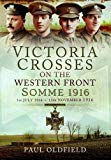German Officers of
180th Infantry Regiment,
Thiepval, Somme
|
|
The battle of Thiepval Ridge, 26-30 September 1916, was part of the first battle of the Somme. After a prolonged period where the main British attacks had been made on their right, Haig began to turn his attention back to the left, and the River Ancre. He hoped to launch an attack on both banks of the river, pinching out a German salient, using the Reserve Army (Gough). This would require a preliminary operation to clear the Germans off Thiepval Ridge, a spur of high ground running north west from Courcelette, and passing north of Thiepval.
The attack was made by the Canadian Corps (Lieutenant-General J.H.G. Byng) and II Corps (Lieutenant General C.W. Jacob), with four divisions along a 6,000 yard front. The Canadian Corps was to capture the spur heading north west from Courcelette, while II Corps was to capture the Zollern, Stuff and Schwaben Redoubts, along with Thiepval village. II Corps was expected to have the hardest job, as it would be attack part of the original German front line, as well as the three powerful redoubts. Accordingly it was given six of the eight available tanks. The attack was to be supported by 230 heavy guns and howitzers and 570 field guns and howitzers.
The attack on 26 September was a mixed success. On the right, the Canadians captured their limited objectives in the first attack. On the left, the 34th Brigade of the 11th Division suffered very heavy losses and failed to make any real progress. In comparison the 33rd brigade suffered 600 casualties; most of them wounded, and took most of their objectives.
On the left the 18th Division was partially successful. On the right its 53rd Brigade advanced very quickly, capturing its first objective in twelve minutes and the Zollern trench by 1.15p.m. An attempt to capture its final objective for the day failed, and the troops spend the night in the Zollern trench. Finally, the 54th Brigade captured most of the village of Thiepval, with the help of a single tank that overcame resistance in the ruins of Thiepval château. The brigade suffered 840 casualties out of its 2,290 officers and men, and formed up next to the 53rd.
On 27 September the 11th Division attacked again, bringing their 32nd Brigade out of the reserve, and got a footing in the Stuff redoubt. To the west the 33rd and 53rd Brigades consolidated their lines, while the 54th cleared Thiepval.
Over the remaining three days of the battle, the fighting raged around the Stuff and Schwaben Redoubts. At the end of the battle the British had reached the line of their final objective, but were unable to clear out the two redoubts. In the end they would fall during the battle of the Ancre Heights in early October.
 Victoria Crosses on the Western Front - Somme 1916, 1 July 1916-13 November 1916, Paul Oldfield.
Splits the story into two halves, first a series of narratives of the various stages of the battle looking at the context of how the VCs were won, and then a longer section of biographies, covering the lives of VC holders themselves as well as their families. The first half provides a readable narrative of the battle and it’s Victoria Crosses, the second half is much more of a reference work(Read Full Review)
Victoria Crosses on the Western Front - Somme 1916, 1 July 1916-13 November 1916, Paul Oldfield.
Splits the story into two halves, first a series of narratives of the various stages of the battle looking at the context of how the VCs were won, and then a longer section of biographies, covering the lives of VC holders themselves as well as their families. The first half provides a readable narrative of the battle and it’s Victoria Crosses, the second half is much more of a reference work(Read Full Review)